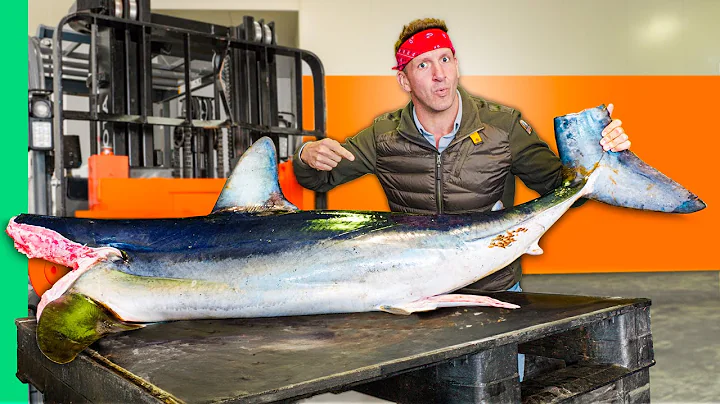"Pre-prepared dishes: convenient, fresh and delicious"
As the saying goes, "food is the most important thing for the people", how can we make "cooking" more convenient, more ritualistic and more creative while satisfying fullness and deliciousness? Fun has become a pain point for consumers and has also become the direction for brands to continue to develop and innovate.
This time, "Whale Chaser" will focus on how prepared dishes can meet consumers' underlying demands for "a good meal" from different innovative dimensions - convenience, durability, human taste, and those that influence or even change Chinese prepared dishes. People conducted interviews and discussions, trying to find the innovative logic and answers.
Simple food, authentic life. Chinese people who live under the influence of gourmet food, love to eat and know how to eat is a skill "engraved in DNA". No environment can affect the Chinese people's enthusiasm and bond with food, and they can find the best way to let the five flavors exist. In the post-epidemic era, the "taste of China" on the tip of the tongue is still a top priority for Chinese people. From "stealth" to "popularity", the prepared food industry, which has been developing for more than ten years, suddenly takes advantage of the trend is the best evidence.
Putting aside the commercial value and "lazy economy" characteristics of pre-prepared dishes, pre-prepared dishes in a narrow sense are always an "ordinary" dish, involving both the traditional cooking process and the ritual sense of enjoyment. The packaging styles, processing methods, and fresh storage techniques of different prepared dishes are all essential carriers to ensure the flavor and quality of prepared dishes. To fully demonstrate an excellent food packaging, it is indispensable to improve food sales, convenience of food circulation, friendliness of packaging disassembly and other service experiences.

Picture: Tetra Recart cartoned prepared dish products © Tetra Recart
In the field of food packaging applications, Tetra Pak ® (Tetra Pak) company has a decisive influence. Dr. Rubin Rausing, the founder of Tetra Pak, once said a motto: "The savings brought by packaging should exceed its cost." The current popularity of the prepared dish track has also brought the packaging of prepared dishes into the market's attention. In the new issue of Fat Whale, we will focus on the product packaging behind the prepared dishes from a unique "flavor perspective" and think about the relationship between packaging and prepared dishes. Close relationship, how does packaging create more business opportunities for customers? Together with Jiang Lingling, senior business development manager of Tetra Pak, they deeply dissected the international food packaging giant’s views on China’s pre-prepared food track, how to use the technical advantages of Western “standardization” to conquer “non-standardized” Chinese food, and add value to pre-made food through packaging value Vegetable brands create added value, ultimately helping B-end catering customers win new business opportunities in the prepared vegetable market.

Picture: Tetra Recart cartoned prepared vegetable products © Tetra Recart
Not only does it make products, it also needs to “set standards”, and the industrialization of prepared dishes can also be “evidence-based”
As we all know, Tetra Pak is the world’s leading food processing and Packaging solutions provider. Tetra Pak entered China in 1972 and transformed from a well-known domestic dairy packaging leader into a complete solution company for food processing and packaging. Until 2003, Tetra Pak further launched the Tetra Recart® brand globally. This was another major technological breakthrough based on the original Tetra Pak paper packaging. It replaced traditional metal cans or glass with "environmentally friendly paper packaging that can be retorted at room temperature". Bottle packaging is favored by processed and packaged food manufacturers and brand retailers at home and abroad.

Picture: Tetra Recart’s innovative packaging materials © Tetra Recart
As a sustainable environmentally friendly retort-resistant paper packaging, from drinks to food, the production of Tetra Recart packaging has spanned 4 continents, with more than 200 plants around the world. The brand uses Tetra Recart, but it is very different from its layout in overseas markets. The story of Tetra Recart in the Chinese market has just begun.
Abroad, the prepared vegetable market has long been very mature, and countries such as the United States and Japan have high acceptance.In 2019, the penetration rate of and in Japanese prepared dishes has reached more than 60%. Compared with Chinese food, which is difficult to standardize, Western food also has unique advantages in developing prepared dishes. In China, the concept of prefabricated dishes is actually not new. In the late 1990s, domestic prefabricated vegetable manufacturers began to appear one after another. Common products are mostly canned prefabricated products, ready-to-eat ham sausages, etc. In particular, canned packaged foods carry the delicious childhood memories of generations of Chinese people, such as canned lunch meat, canned military pork, canned eight-treasure porridge, and so on.
Jiang Lingling believes: "China's long-standing food culture has created a special consumer market. Taking advantage of the rise of domestic prepared dishes, Tetra Recart packaging has only begun to accelerate its advancement in the Chinese market in the past two years. The main reason is due to the traditional Canned products are deeply rooted in the Chinese production market.”

Picture: Comparison between Tetra Recart packaging and traditional can packaging © Tetra Recart
A classic narration in "China on the Bite" said: In China, which has undergone tremendous changes, people and food are more important than anything else. Time goes faster. Guided by the trend of consumption habits such as lazy economy, stay-at-home during the epidemic, and table culture, ready-to-heat food, ready-to-cook food, and ready-to-prepare food along with prepared dishes have begun to accelerate, which naturally also derives more packaging for prepared dishes. tricks. In Jiang Lingling's view: " With the advent and rise of China's pre-prepared dishes, Tetra Pak saw the opportunity and opportunity for Tetra Recart packaging to enter during the exploration. In order to meet the 'no standard' definition of pre-prepared Chinese dishes , Tetra Pak has specially built the Tetra Recart® Laboratory (TRC Lab) of the Tetra Pak China Product R&D Center for the Chinese market. Starting from Chinese taste preferences, Tetra Pak uses popular dishes to further provide a more complete one-stop for food companies. "

Figure: Tetra Recart® Laboratory (TRC Lab) © Tetra Recart
It should be noted that except for a few leading domestic catering companies that have the ability to build their own central kitchens, the scale is not large. Large B-end catering companies need to rely on semi-finished products, cooking kits or pre-made ingredients purchased from third parties to stabilize operating efficiency and unify taste. This has resulted in the consumer terminal of pre-made dishes still being dominated by B-end channels that increase volume faster. , compared with the just-starting C-end consumer market, shows an overwhelming advantage of 8:2. Since C-end prepared dishes are still in the cultivation stage, the high proportion of B-end industry fields undoubtedly fits Tetra Recart’s strategic positioning as a food packaging supplier in the Chinese market, serving B-end food companies as the representative.
Of course, China’s prepared food market is booming, but there are also many variables, and there is still no universally standardized formula that can be applied. briefly analyzes the aspects of "taste" and "delivery". Chinese cooking methods are complex, there are many dishes from the eight major factions, and there is no completely standardized basis for craftsmanship, heat, seasoning dosage, etc. The same ingredients also have different tasting experiences according to the changes in the four seasons. As well as logistics and distribution capabilities such as cold chain, normal temperature and size of prepared dishes, there are also issues such as timeliness, geography and cost.
Facing the unknown and uncertain blue ocean of prepared dishes, Jiang Lingling said: "The unique Tetra Recart packaging is also trying to find a direction, from the concept of prepared dishes to the serving of delicious food, and actively explores the relationship with China Cooperation space for B-end channel customers.
In addition to helping B-end customers make profits at the commercial level, Tetra Recart also has deeper considerations for the development direction of the prepared dishes. Jiang Lingling shared: Tetra Pak’s development and innovation They all follow the brand promise-protect good quality.One of the key dimensions is to 'protect good food'. By protecting food quality, we think about how to provide safe packaging and preservation technology, and improve the quality of consumers' lives with high-tasting products. Secondly, Tetra Pak hopes to use its own technological advantages and standards to influence the development trend of China's prepared vegetable market, which can help the field of prepared vegetables to develop better and more stable industry standards, just like the results achieved by Tetra Pak in the dairy market. ”
Obviously, Tetra Recart’s development layout in the Chinese market is not limited to technical upgrades. Whether the dishes are delicious or not is important, but it also helps thousands of B-end customers to stably perform, operate efficiently and accumulate in the prepared dish industry. users, and effectively integrate Tetra Recart packaging and process solutions into B-end customer product production and creative processes, which is a top priority

Picture: A wide range of Tetra Recart carton packaging products ©Tetra Recart
. From the concept to the implementation, Tetra Recart brings the industrialization of Chinese food to fruition.
focuses on the topic of food packaging of prepared dishes. From raw ingredients to delicious food for lazy people, the convenience attribute between packaging and prepared dishes can be described as "inextricably linked". In addition, Chinese cooking and food culture emphasizes "never getting tired of fine food, never getting tired of fine cooking". Chinese people's requirements for dishes are inseparable from "freshness" and "hot pot flavor". Consumers' rising quality requirements in the field of prepared dishes are also urging Simultaneous improvement of packaging technology.
Looking at the more common pre-made vegetable packaging technologies on the market include controlled atmosphere vacuum, lamination, canning, etc., the temperatures are divided into normal and refrigerated, and the styles are divided into bowls, boxes, Bags, cans, soups, meat and vegetable dishes, etc., have been used in various consumption scenarios. Different packaging and storage technologies, cooking methods, materials, specifications... will more or less affect the prepared dishes. The flavor will have a changing impact, leaving consumers with different experiences and impressions. Moreover, based on the considerable prospects and volume expansion of the prepared vegetable market, packaging costs and marketing methods will also bring long-term challenges to the B-end channel.
. From a third-party perspective, Tetra Recart packaging can provide a new solution for prepared foods. Jiang Lingling said: “Regarding the packaging of prepared dishes, Tetra Recart has too many surprises to bring to the Chinese market. Tetra Recart’s one-stop pre-made vegetable packaging solution, whether in terms of concept, technology or service, communicates with B-end customers in a full-link model, and continuously adjusts the packaging effect through repeated experiments and market feedback. Influence the high-quality development of the prepared vegetable industry and enterprises. "
To this end, look back at the packaging itself and think from several key perspectives. What are the outstanding differentiated competitive advantages of Tetra Recart packaging in terms of "flavor" and "production efficiency" of prepared dishes? Can it make the seemingly thin and light Can paper packaging transcend the limitations of time to preserve the smoky atmosphere of different Chinese dishes and satisfy the convenience of fast food?
Before answering the above questions, Jiang Lingling particularly popularized the advantages and disadvantages of traditional metal can packaging: "Canned packaging has its own advantages. Excellent sealing, long shelf life, and diverse tolerance, but there are also flaws in transportation, storage, use, and taste. Tetra Recart's paper packaging can not only make up for the shortcomings of canned products, but is also based on traditional cans. The advantages of craftsmanship have been innovatively upgraded. "
You must know that each of China's eight major cuisines has its own merits. It is indeed difficult to industrialize Chinese prepared dishes. The problem is mainly reflected in the degree of restoration of "taste" and "mouthfeel". The test is the product development of B-end food companies and production capacity. Jiang Lingling believes: "If 'non-standardized' Chinese food can have a 'standardized' basis similar to Western food, it will naturally greatly reduce the operating resistance of B-side customers and improve production efficiency. Then standardization will definitely be a trend in the future. trend. And coincidentally, the Tetra Recart brand can cooperate with B-end customers to achieve standardized production of prepared dishes by providing a comprehensive solution for prepared dishes.For example, regarding taste, the Tetra Recart® Laboratory (TRC Lab) of Tetra Pak China Product R&D Center, which has been officially put into operation, will convert uncertain parameters such as heat and seasoning that are difficult to quantify in traditional kitchens into precise weights and volumes. , temperature, time and other values, and use automated parameter control to provide simulation test conditions for the standardized and industrialized mass production of pre-made dishes, completely saving B-end customers time in developing pre-made dishes and exploring process parameters . ”

Picture: Tetra Recart® Laboratory (TRC Lab) accurately measures seasoning parameters © Tetra Recart
In addition, from the perspective of dish process refinement, Jiang Lingling further explained in detail: “Because of China’s Tetra Recart Laboratory Equipped with standard Chinese kitchen equipment and an experimental production line that simulates industrial production, it can simulate the complete production path of pre-made dishes from raw materials to finished products. It will also deeply and meticulously figure out the running-in between dishes and production equipment, fully considering the form and duration of processing. ... try to restore the flavor level that Chinese prepared dishes want to achieve as much as possible. In the past few years, Tetra Recart has formed a clear innovation link for prepared food packaging in the process of cooperating with different overseas B-end customers, which can distinguish and stay away from market competition dilemmas. The unique paper packaging has also established an unforgettable image. Deep fresh image. ”
However, what makes Fat Whale want to know more deeply is that when B-side catering companies come to Tetra Recart with their needs and ideas, in addition to the basic restoration of the flavor of pre-made dishes, what other innovations does Tetra Recart paper packaging have? What about value?
Jiang Lingling shared: “ is first and foremost the choice of consumers. The Tetra Recart® laboratory of Tetra Pak China Product R&D Center explores food trends and provides customers with R&D suggestions based on mainstream trends. For example, meat dishes are more attractive than vegetarian dishes, and the Chinese stomach, which prefers heat to cold, prefers hot dishes far more than cold dishes. So when it comes to assisting B-end customers in creating popular products, Tetra Recart will recommend that customers consider meat dishes + A combination of hot dishes. Moreover, Tetra Recan's retort-resistant paper packaging can also satisfy hot food including soups, sauces, meat and vegetable dishes, without the rusty smell that may be produced by canned packaging. At the same time, our paper packaging, which is easier to open and hold, also draws on the can sealing process and matches the requirements of the paper packaging process from the perspective of filling and sterilization. 91% of consumers are deeply satisfied with the convenience and safety. . Coupled with Tetra Recart's automated production line, it can perfectly shape the advantages of production reform. Overall, it not only matches the needs of B-end customers, but Tetra Recart can also understand the cooking concepts of B-end customers, thereby completing the process across different categories. Gourmet products. ”

Picture: Daily application scenarios of Tetra Recart prepared dish products © Tetra Recart
As for the underlying application logic of “winning in space”, the expressiveness of prepared dish products on shelf stacks also seems to be of concern to B-end customers. Therefore, Jiang Lingling said: “ saves space and transportation costs, which is also the second largest innovative value of Tetra Recart packaging. The well-known traditional metal cans, glass bottles or irregular bagged dishes cannot make full and effective use of space and gaps, whether in warehouses or on shelves, but Tetra Recart packaging can be compressed when not containing the contents. The space saving rate during storage and storage of empty packaging is as high as 90%. After being put on sale, Tetra Recart's square packaging style can also be placed more regularly, saving 30% of the space occupied by metal cans and glass bottles. Moreover, using food canning technology and high-pressure post-sterilization method, the special protective layer specially added in the paper packaging can also insulate the contents from light and oxygen, and have a higher quality assurance effect, which will affect B-end customers. Better business returns illustrate the definition of 'less is more'. ”

Picture: Tetra Recart carton packaging saves space and transportation costs © Tetra Recart
Back to the basics, packaging is more than packaging. Food packaging not only protects food during transportation and extends the enjoyment period of food, but also gives brands and products unique value propositions and marketing advantages. Japanese packaging design master Shihito Sasada once said: "It takes only 0.2 seconds for a product to catch the eye. If you want to make customers want to stop, you must rely on eye-catching packaging." The same principle applies to the field of prepared dishes. To stand out from the dazzling array of prepared dish shelves and counters, packaging is not unimportant.

Picture: Tetra Recart carton packaging on the shelf © Tetra Recart
Jiang Lingling also gave a unique insight on this: "In fact, the average consumer will not choose products directly through packaging, but Tetra Recart still We will keep in line with the market in terms of marketing and provide customers with richer added value. For example, we will make good use of the shelf space on the consumer side and make full use of the six-sided printing space of Tetra Recart carton packaging to help customers tell their brand stories and product values. The purpose is to use better packaging to attract customers in the market. But what Tetra Recart does is not simply to sell packaging, but to feed back to customers and communicate with customers based on the knowledge we have gained about consumer behavior. Let’s work together to maximize product value and brand effect ”

Picture: Tetra Recart carton packaging 360-degree display of customer needs © Tetra Recart
Although food packaging is only a link and a scene in catering applications, But from back-end production to front-end sales, whether it is Tetra Recart or other packaging brands, what customers should consider and consider is the deeper service value behind the packaging.
"Sustainability" in packaging, maximizing economic benefits in the long run
Currently, following the path of the rise of prepared dishes, among the C-end consumer groups that account for 20%, in addition to young people, who are the main consumers of prepared dishes, a large number of Moms who are still working hard in the workplace are faced with the tight pace of life, which forces them to make healthy and delicious dishes quickly and conveniently every day. Because of this, there has been a "prepared dish" industry with a consumption scale of 300 billion yuan. A prosperous scene.
The huge number of consumers of prepared dishes and the diverse application consumption scenarios reflect the changes in today's public lifestyles. It is an essential requirement for B-end catering companies to reduce costs and increase efficiency. Faced with the crucial "cost" factors, people can’t help but wonder, in what way can Tetra Recart paper packaging generate direct profits for B-end customers compared to traditional metal, glass or common plastic packaging? After all, a large number of small and medium-sized catering enterprises require both survival and development, and strive to maximize economic effects.
On this point, Jiang Lingling explained the obvious advantages hidden in paper packaging from a new perspective: "With the introduction of dual carbon targets, the reduction of carbon emissions of catering companies is a win-win situation for achieving economic and social benefits. And benefits Lejia packaging is made of FSC™-certified renewable raw materials. The carbon emissions are much lower than metal cans and glass cans during the service life of the packaging. Paper packaging is far lighter than traditional metal glass material packaging. It also reduces space occupation during the logistics process, increasing transportation capacity by 10-20%, which means that in terms of logistics transportation capacity, product transportation costs and carbon emissions can also be reduced. "
Moreover, Jiang Lingling also emphasized: "Nowadays, C-end consumers have begun to pay more and more attention to environmentally friendly consumption, promoting sustainable business operations and low-carbon circular economy. In terms of diet, they are not only more and more concerned about the quality of food, but also how the food is packaged. 利Lejia paper packaging can not only help B-end customers reduce their cost burden, but also indirectly meet the growing environmental protection needs of C-end consumers through the benefits of environmentally friendly packaging."
Not only that, Jiang Lingling also shared with Fat Whale some interesting food packaging tips on the market: “Hot dishes full of pyrotechnics have always been more in line with the appetite of Chinese people.For most self-heating prepared dishes on the market, the disposal of the heated contents after use is generally ignored. These items that are discarded after heating will not only increase the carbon emissions of catering companies, but also impose a burden on the environment. The goal of carbon emission reduction is being gradually broken down into various industries, involving production, raw materials, etc., and more and more companies are actively seeking to replace the pollution of existing packaging with environmentally friendly methods. At this time, the advantages of paper packaging are highlighted again. It can also unlock the flavor of hot dishes. Tetra Recart paper packaging optimizes its own carbon footprint to the lowest, which is much lower than metal, glass, and plastic bags. By promoting a sustainable lifestyle and using environmentally friendly materials, sustainable production and consumption will continue to create higher brand value-added space for B-end customers in the future. "This also allows Fat Whale to see that Tetra Recart, as a food packaging supplier, has a longer-term thinking in the overall industrialized production of prepared dishes, which can effectively widen the profit margin gap for B-side cooperative customers.
It is undeniable that, The epidemic has catalyzed the development of the prepared food industry, but in the future, consumers' demand and enthusiasm for prepared dishes that represent "instant cooking" will not diminish with the disappearance of the epidemic.
is well aware that there is no small matter on the common people's table, health, and food. Delicious prepared foods allow today's consumers to eat all over the world without going out. Tetra Recart is using paper packaging to provide customers with more diversified "taste buds" by targeting the catering industry in the pre-prepared food market. "At the same time, we also look forward to working with B-end channels to seize the future of localized pre-made fast food.





















